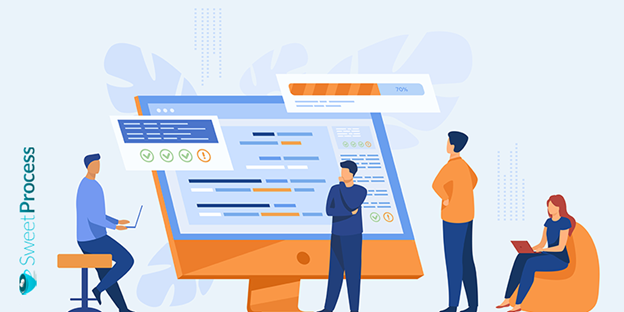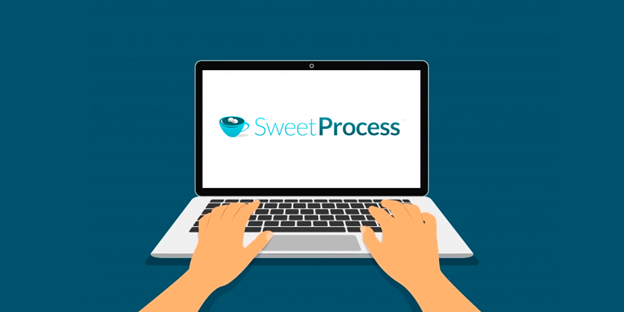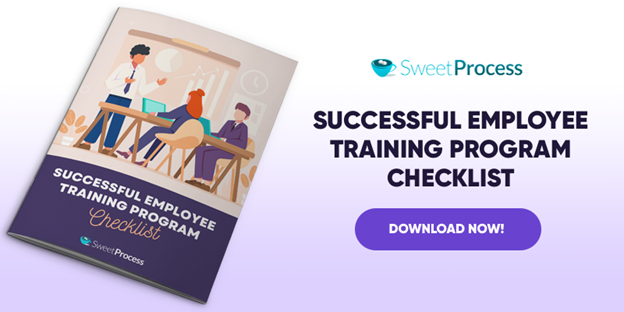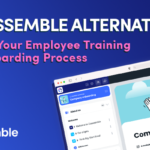The Ultimate Employee Training Guide
Last Updated on January 24, 2022 by Owen McGab Enaohwo

According to a report from a 2020 Work Institute study, voluntary employee turnover costs businesses in the United States more than a whopping $630 billion every year.
Employees typically seek opportunities to learn, develop, and progress. As such, those who get regular access to such opportunities are the most likely to stay with an organization. Conversely, a lack of the same leads to rampant absenteeism and staff turnover.
But that’s not all. Continuous learning and development not only form one of the top factors in employee engagement but also help instill employee confidence while fostering healthy company culture. And while initial training lays the basis for a new employee’s success, ongoing training is crucial in developing all employees.
Employee Training Guide – Table of Contents
Chapter 1: Definition: What Is Employee Training?
Chapter 2: Employee Training Benefits
Chapter 3: Types of Employee Training
Chapter 4: Steps to Effective Employee Training
Chapter 5: Useful Employee Training Tools
Chapter 6: Employee Training Methods
Chapter 7: How to Choose the Right Employee Training Method for Your Workplace
Chapter 8: Evaluation of Effectiveness
Chapter 9: How SweetProcess Can Help You
Chapter 1: Definition: What Is Employee Training?

Employee training is a structured educational and training program with a key purpose to enhance workers’ knowledge, competencies, performance, and efficiency, resulting in increased productivity. Simply put, employee training helps employees perform their tasks more effectively.
While most organizations typically carry out these coaching and mentoring programs sporadically rather than continuously, the need for employee training in the workplace cannot be overstated.
This is because it plays a vital role in the overall growth of an organization by providing the vital skill sets required for employee development. It, therefore, forms a crucial component in any successful organization’s training and development plan.
Employee training is a costly investment for any business. However, the return on investment is worth every penny. Besides, an untrained workforce costs your business way more than well-trained workers.
Why It Is Important
Employee training is vital as it helps develop a highly-skilled workforce, ensures optimum resource utilization and contributes to a positive working environment. Moreover, it keeps workers updated on the latest trends and technologies necessary to survive and remain competitive.
Designed for both new and more experienced workers, training enables fresh employees to familiarize themselves with their jobs while enhancing work know-how for more experienced workers. In general, employee training imparts new skills for all employees.
Employees need various skills at different stages of their work life, such as after a promotion. Employee training is necessary to ensure that the quality of work remains high across different organizational levels. In large firms, employee training comes in handy when workers move across different sectors or work assignments. The training helps them quickly learn about their new assignment, thus helping them settle into the unfamiliar environment.
On the same note, offering employee training helps organizations assess training needs and identify skill gaps, making it easier to provide relevant training. In other words, it provides an effective way of building on employee strengths and addressing deficiencies identified during performance reviews.
That said, employee training programs need to align with employee needs as well as business goals and objectives. Otherwise, the training can become ineffective and end up as a business loss. For example, if your firm has launched new products and is looking to establish or strengthen its sales team, then a sales training course is both ideal and necessary.
Chapter 2: Employee Training Benefits

Businesses can conduct employee training programs either through in-person or online training. Whichever format you choose to employ, training results in numerous benefits for both the organization and its employees. Below are some of the benefits:
- Increased profits
- Increased productivity
- Fewer accidents
- Less supervision
- Better employee retention
- Reduced inefficiencies
- Enhanced onboarding
- Better employee motivation and engagement
- Increased innovation that leads to new solutions and products
- Better company reputation
- Reduced wastage
Let’s take a deeper look at some of the key benefits:
Increased Profits
Because employee training directly impacts employee productivity by improving their knowledge and skills, it helps boost organizational efficiency, resulting in increased profitability. You can tell how effective your employee training program is by checking your employees’ productivity levels before and after the training.
Global competitiveness and constantly-changing technology leave no room for complacency. This means that your workforce skills need regular updates to keep the employees ready and capable of supporting your company. Among the valuable skills that employees learn or hone through work training that could help translate to increased profits include:
- Work ethics
- Work safety
- Quality standards
- Leadershipskills
- Digital skills
- Sales skills
- Remote working skills
Better Employee Retention
As mentioned earlier, implementing employee training has a tremendous impact on employee retention. It makes workers feel that their employer is invested in their success. By continuously being provided with the opportunity to learn new skills and enhance their abilities, they not only become better workers, but they also feel appreciated and valued as members of your company. This plays a major role in boosting their morale, loyalty, job satisfaction, engagement, and work performance.
Employee training programs also help a company test the effectiveness of its performance management system in place, helping them establish coherent performance expectations. Such systems help reinforce the importance of meeting organizational goals, make it easier for employees to understand what’s expected of them, and motivate them to meet those expectations. It also helps to attract top talent keen on career advancement.
Another upside of employee training related to employee retention is that employees can better understand and perform multiple roles with cross-training. This prevents burnout and assists employees in preparing for additional responsibilities, job opportunities, or future roles.
Fewer Accidents
When you train employees, there are fewer chances of making mistakes or causing accidents on the job. Since all workers go through the same kind of training, they follow similar work processes, which results in fewer errors. They are also better placed to prevent or handle any errors that might occur.
Training on work safety also leads to fewer accidents through the effective implementation of standardized procedures and processes. This entails laying out clear task guidelines, communicating this information to all staff members and ensuring employees possess the tools needed to perform their tasks.
Finally, trained employees make better, safer and more economical use of company resources and tools. This means that accidents and equipment damage are kept to a minimum, keeping wastage low and reducing operating costs.
Less Supervision
Training and skill development programs are instrumental in helping employees to manage tasks effectively and efficiently, either individually or as part of a team. Since employees are well-versed in the skills required for their roles, understand workplace systems and processes, and work with clearly defined goals, they require less supervision.
Also, being well aware of their duties and responsibilities allows their supervisors more time to focus on other employee needs.
Lastly, employee confidence in their capabilities promotes work enthusiasm and accountability for results, while enabling managers to delegate tasks effectively.
Helps in Securing Long-Term Organizational Success
With improved competencies and capabilities comes increased innovation that leads to new solutions and products. The thing is, today’s dynamic technologies require constant upskilling, and employee training programs provide a unique opportunity for employees to do just that.
Such efforts to empower workers inspire independence, creativity, innovation and risk-taking. They also encourage a willingness to explore various ways to improve processes and meet business challenges head-on.
What’s more, workers develop soft skills such as emotional intelligence, resilience and agility. These skills are crucial in adapting to dynamic workplaces and fostering a healthy working camaraderie.
Ultimately, all these factors contribute to a positive work environment, thus enhancing productivity and long-term organizational success.
Chapter 3: Types of Employee Training

Employee training is a broad term encompassing multiple kinds of learning. As such, there are different types of employee training modes available, with each approach designed to suit a unique situation. Understanding the various types can help you decide on the most appropriate one for your business.
While employee training primarily refers to educational programs that impart specific knowledge or skills to employees to improve current performance, it also incorporates employee development. The latter is broader in scope and focuses more on growth while supporting future performance. Employee development also centers on acquiring skills applicable in a wide array of situations, such as decision-making, leadership, and communication skills.
Employee training types include some of the below:
- New employee training: Also known as onboarding training, this training focuses on inducting new employees into the firm. It covers all the essential work details new employees need to know within the initial weeks to succeed in their new roles. This includes information on tools and software in use, support resources, communication modes, company policies, and who to contact regarding specific issues.
- Sales training:Sales training stresses selling a company’s products and services. It focuses on the selling points and teaches salespeople to navigate objections and difficult questions while marketing and selling their products. Sales training often utilizes role-playing to help the sales team experience how to sell their company’s products and services more effectively.
- Compliance training:This training is crucial for all employees and covers everything a worker needs to know to ensure the company runs smoothly. While it varies from firm to firm, it basically comprises training on job responsibilities, safety, security, and technical aspects. Plainly put, your employees’ biggest struggles and any information they wish they had at their fingertips should ideally be part of your firm’s compliance training.
- Manager training:Employees identified for promotion usually undergo managerial training. This entails training on leadership skills, soft skills like delegation and motivation, as well as technical skills.
- Customer service training:Designed for customer service reps, this training focuses on upskilling employees to enhance their customer support skills. Practical customer service training lays emphasis on patience, professionalism, and a people-first attitude. Done correctly, the training helps employees to serve customers better, ensuring they derive more value from your services, thereby increasing customer satisfaction.
- Technical training:This fundamental component of employee training enables employees to perform their jobs correctly. It focuses on the technology, tools, or software used in an organization. Not every job role requires technical training, though, so most firms implement it on a need-to-know basis. However, regular technical training is necessary to cover software or technology updates and instill job know-how skills, like data analysis.
- Customer education training:This is meant to assist users of your products to learn how to use and derive maximum value from them. It entails onboarding, engaging, and retaining both new and existing customers. Good customer training results in excellent customer experience, increased customer loyalty, and word-of-mouth referrals.
- Soft skills training:Soft skills, such as time management and communication, are vital for employee growth. These personal attributes allow employees to collaborate and interact harmoniously and efficiently with colleagues, customers and the management. Though they don’t relate directly to particular roles, soft skills are crucial for all staff, and gaps in basic soft skills may hamper company success or contribute to staff turnover.
- Corporate training: Corporate training, or workplace learning, is an approach that employs a system of activities aimed at educating employees. The availability of employee learning means that there are advancement opportunities in an organization. This prompts employees to strive to achieve higher work standards to receive better remuneration and higher job positioning.
- Leadership training: This type of soft skill training focuses on honing leadership skills and cultivating interpersonal capabilities, like communication or project management skills. By building on foundational skills, leadership training is especially suited for employees on track to become managers or those who have recently accepted leadership positions.
- Products and services training:Mostly designed for salespeople, customer service representatives, or those in customer-facing roles, this type of training covers all your products and services, highlighting their unique selling points. It also covers product specifics such as the features, warranty period, as well as frequently asked questions, and helps employees understand their company’s offering better.
Identifying the most appropriate type of employee training for your firm and when to use it is key to building a culture of employee growth. It also helps in contributing toward positive morale. Besides, employees need to participate in regular ongoing learning to stay abreast of the latest developments in their industry. That said, the proper learning platform is also a vital element in implementing effective employee training.
Chapter 4: Steps to Effective Employee Training

Now that we understand what employee training is and why it’s important, let’s look at the steps you need to follow when creating a high-impact employee training program.
1. Write Down Your Employee Goals and Objectives
The first step in creating an effective employee training program is determining your employees’ goals and objectives. The most valuable objectives are those that contain a measure of the current vs. the desired state. For instance, if you are tracking certain metrics currently, use them to create your goals and objectives.
You might also want to consider your company goals and the impact you hope the employee training and development program will have on your organization. This is because you will want to develop an employee training program that delivers on the company’s goals and objectives.
2. Identify Skill Gaps
The second step involves identifying the skills and knowledge your employees require to meet company goals. To identify deficient skills, managers should first evaluate how employees’ performances affect the company’s progress in attaining its business goals. The training program should then be designed to address the specific skill gaps hampering the organization’s progress.
Consider this: are your employees’ current performances helping to meet business goals? If not, establish the gaps between their current skills and the desired skills. This will help you pinpoint the specific learning objectives needed and help you design the training to address these objectives.
To do this, identify the particular behaviors that are working against your desired outcomes. For instance, are the salespeople making enough client calls? Are they converting potential clients at a decent rate? In this case, include “how to make impactful cold calls” and “how to improve your conversion rates” among your learning objectives.
To take this a step further, categorize the learning objectives into three main groups, then plan activities that target them as shown here:
- Motivation: Assist your employees in understanding exactly why they ought to change their current behavior. Motivate them by pointing to an attribute that appeals to their sense of purpose.
- Skills mastery: Identify the skills the employees need to perform their jobs efficiently, as this will have the most significant impact on their performance.
- Critical thinking: What do your workers need to know to perform their jobs well? Identifying critical knowledge will help you determine your course content.
3. Decide on the Employee Training Method You’ll Use
Once you identify your employees’ skill gaps, the next step is to tailor the training and development program based on employee interests, learning styles and experience level. To establish the best training method for your team, you will need to consider factors such as employee background and preference.
Below are some of the learning methods that you can use to design your training and development program:
- Simulations
- Role-playing
- Classroom style
- Reading materials
- Coaching and mentoring
- E-learning—this also covers remote learning for off-site staff using tools like webinars, video conferences, and online forums
Consider using a layered training program. This entails using a series of sustainable learning activities to build performance improvement over the long term. It blends learning experiences and training methods to optimize the best use of your time. Moreover, a layered approach ensures that your training program targets the needs of the employees, business, and customers.
4. Make Sure Your Employee Training Goals Are Measurable
Keeping your business goals in focus ensures that your employee training program provides a measurable impact. To determine measurable employee training goals, focus on quantifiable aims.
For instance, instead of hoping the sales team makes more sales after a sales training, attach a specific number to the improvement desired. Hence, you can have a goal like increasing sales from $1 million each month to $2 million per month.
5. Measure Outcomes and Improve Your Training Programs
To measure employee training outcomes, compare your employees’ performance before and after the training. Also consider the workers’ experience during the course of the program. These two metrics can guide future efforts in implementing employee training and development by helping you make alterations to your current program or improve future training programs.
It’s important to point out that training and support should be a continuous effort and should not cease once the employee training and development program ends. Continued support is essential as it helps to ensure that the training sticks. At the end of the day, an effective training program is one that benefits both the company and its employees.
Chapter 5: Useful Employee Training Tools

While both employers and employees agree that employee training is essential, most workers dread it. About 70% of them acknowledge they lack the requisite skills to perform their jobs satisfactorily, while others reckon the learning programs or tools employed don’t meet their needs adequately.
On their part, employers tend to get too focused on the logistics of the training process or managing the system that the learners’ actual needs get neglected. Indeed, ineffective training costs businesses a staggering $13.5m annually per every 1,000 employees. But this need not happen. One way to make training effective is to use appropriate training tools.
It’s safe to say that an employee’s training experience is highly dependent on the training tool or software used. To upskill staff, conduct training on new processes, or onboard a new sales team, you need to use the most appropriate workforce training tools. These are platforms, programs, or templates that help train instructors to deliver training to learners.
Excellent training tools need to be user-friendly. They should make it easy for managers to develop and track learning content and for the learners to take lessons and make references.
The right tools also allow you to manage tasks more efficiently by organizing your entire training process. You can also leverage them to level up your employees’ overall performance.
Below are some of the best learning and development tools you can use to deliver transformational employee training:
Learning Management Systems (LMS)
Learning management systems (LMS) form some of the most critical corporate training tools for creating online training programs. They also make some of the best employee training tools for trainers looking to manage users while tracking their performance. This is because the online staff training software makes developing, delivering, and managing effective employee training programs remarkably easy.
Ideal for both large- and small-sized businesses, LMS software enables you to shift from classroom-based training to online training with a system that delivers tangible benefits to your organization. An LMS tool benefits you by:
- Making it easy to create online courses using intuitive and collaborative tools.
- Automating repetitive administrative tasks like grading assignments.
- Reducing training costs by cutting down on travel and instructor expenses.
- Saving training time since classes are online and available on-demand.
- Offering ready-made courses on a wide variety of soft skills.
The most suitable LMS software provides a platform that allows you to organize your learning material into a learning path that’s both seamless and intuitive. Here, your team can learn, collaborate, and even test their knowledge.
To select the best LMS tool for your training needs, consider the features, customer support and pricing. You can also choose between a cloud LMS like TalentLMS or a private-hosting system like eFront. Alternatively, start with the free LMS version and try it out first to see whether it’s right for you.
Project Management Software
Instructional designers generally use project management software in their work. However, it also forms an ideal training tool for staff training. This is because workers can use project management tools to track their learning and collaborate during group projects.
The most common project management software includes Trello, Basecamp and Asana. These tools also integrate with Slack and Google Calendar to ensure that workers adhere to their training schedule or assessment timelines.
Video Training Portals
Video training portals have one main advantage. They offer live support from an expert trainer, making them ideal employee training tools for employees with varying schedules or remote workers. With video and audio conferencing tools like Zoom or GoToMeeting, you can also live stream the trainer, allowing learners to connect as well.
Such tools enable the learners to view and hear the instructor, ask questions, and offer ideas and suggestions by virtually raising their hands. They also feature screen sharing and recording, making it possible for an employee who misses a training session to watch the recording later.
In-App Learning Tools
In-app learning tools offer timely guidance for employees learning to use complex software. They provide employer training within an app through a series of tutorials, interactive walkthroughs, pop up screens, or videos. Since in-app training relies on user-driven actions to make it interactive, employees mostly learn by engaging with the app.
This training tool makes learning convenient and easily accessible. It can split an entire training course into small, manageable sections, making it easier for learners to consume what they need. Also, learning by doing is more effective than merely telling learners what to do, as the latter is easier to forget.
Learning tools like Userlane offer personalized training. This means you can create a user-friendly and intuitive experience that takes employees through new software at their preferred pace. Users can then understand, appreciate and use new technologies or workflows faster and with minimal effort.
Knowledge Base
A knowledge base offers an ideal solution to many employee training woes. It not only forms a vital staff training resource but it’s a ready source of information for both trainers and employees. Additionally, it makes staff onboarding much quicker, easier and cost-effective.
The knowledge base contains documented training information in the form of instructional materials, manuals and reference guides. And because every staff member can access the knowledge base, it makes training more efficient. Employees can learn at their own pace, consuming the information from any location. Additionally, a knowledge base facilitates streamlined employee training while fostering internal collaboration.
Learning Experience Portal (LXP)
Learning experience portals (LXP) form some of the hottest entrants into the employee training tools space. They are pretty similar to LMS, but you need to use the two tools together. LMSs are suitable for trainers, while LXPs are ideal for learners. They are customized, interactive learning hubs that place the trainee at the center of their learning experience.
To make it easier to find and consume learning content, most LXPs integrate with collaboration, gamification, or social learning. Like YouTube, they provide you with the content you need, whenever you want it. A good example of an LXP tool is EdCast.
Chapter 6: Employee Training Methods

There is a wide array of employee training methods available for organizations. Most of them can be implemented on the job, allowing workers to learn as they work, while others require employees to leave the office.
Based on company goals and learner needs, you can choose to stick to a single approach or use different methods to suit different situations or employee groups.
Here are some of the most commonly used employee training methods:
- One-on-one training
- Online courses
- Classroom training
- In-app solutions
- Blended training
- Peer learning
- Microlearning
- Simulation
- Coaching
- On-the-job training
- Mentoring
- Virtual instructor-led training
- Group activities
- Case studies
- Role-playing
- Cross-training
- Job shadowing
Let’s take a brief look at some of these training methods:
- Peer learning: This occurs in training situations where colleagues support one another in the learning process. The technique promotes teamwork and collaboration to attain knowledge, with each learner acting as both a donor and recipient.
- Microlearning: Here employees receive their learning in tiny doses that are easier to digest. Heavy training material is consumed and understood in a short time and with minimal effort, e.g., on a mobile device.
- Simulation: This is relayed via a computer, virtual or augmented reality device. It delivers some of the most favorable learning outcomes by offering a lifelike immersive experience in an environment that resembles real life. It’s typically used for training that might be considered expensive or risky if carried out in a natural environment.
- On-the-job training: This is a common approach to training that involves observing and copying or the use of structured courses. For instance, a new hire gets trained by a superior on skills necessary to perform their job. The method entails learning by doing.
- Case studies: These provide a fairly quick way for workers to learn and understand real workplace problems. They can read the material at their own pace or work in teams.
- Role-playing: Learners get to practice what they are learning in a controlled or simulated scenario. Safe role-playing ensures there are no serious consequences if learners make a mistake.
- Job shadowing: This method aims at inspiring workers’ interest and engagement. Perfect for employees tagged for promotion, it gives them an opportunity to view their work from a different perspective.
Each of the above employee training methods suits different situations, hence will be most effective when carried out in the right environment. Otherwise, they may yield negative results.
That said, when carried out well, these training methods can form an excellent tool for your company’s success. It’s also worth noting that various training methods will prove useful at different stages of your trainees’ learning journey.
Chapter 7: How to Choose the Right Employee Training Method for Your Workplace

As mentioned earlier, employee training is an expensive undertaking. Hence, choosing the right employee training method is a key factor in avoiding unnecessary training costs. Besides, it can help your company develop highly skilled professionals and increase its retention rate.
As such, a training manager needs to evaluate the various training methods available and identify the best approach to deliver training information to employees. While there is no perfect method, each organization has different demands, and a combination of different training techniques might best serve the employee’s training needs. This also allows the learners to reap maximum benefit from the various methods.
To determine the ideal training method for your workforce, consider the following:
The Goal of the Employee Training Program
Consider the critical objectives of the employee training program and use a method tailored to the intended audience. Base your choice on factors such as:
- Demographics
- Seniority
- Nature of work
- Whether you want it to be group or individual learning
For instance, interactive training is most suited to developing new skills, while coaching is more suited for succession planning. On the same note, some older employees might prefer traditional learning methods to e-learning, which might be better suited to millennials.
The Intended Audience
To get their buy-in, assist learners in appreciating the value of the training program by choosing a method that focuses on their specific needs, preferences and circumstances. Some employees learn better visually, hence might appreciate training modes that employ a visual medium. Still, others learn best from reading, hearing, or through active participation.
The Prevailing Constraints
You also need to identify any limitations that may favor one method over another. These include resources like time and money. To overcome time constraints, use quick and convenient staff training methods, like e-learning. Again, if your company is on a tight budget, opt for less expensive options like job rotation or blended learning.
The Benefits of Training In-house vs. Outsourcing
Both in-house training and outsourcing offer numerous advantages to companies and learners. But while outsourcing allows your learners to get access to industry experts, it can be expensive. In-house training, on the other hand, delivers unique and far-reaching upsides as shown below:
- Gives you full control:You remain in control of employee training and development and can tailor your training resources to suit business goals and employee needs.
- It’s cost-effective: It is cheaper; the firm doesn’t need to pay for offsite training facilities, and productivity continues unhampered.
- Offers convenience: Workers don’t need to travel or take time off work. It also cuts down on the amount of time employees spend away from their work/office.
- Builds internal capacity: It helps in creating a knowledge base.
- Fosters teamwork:In-house training fosters collaboration between colleagues and contributes to stronger teams.
Chapter 8: Evaluation of Effectiveness

To quote Peter Drucker, “What gets measured gets managed.” Evaluating your training program is crucial as it helps you to pinpoint training gapsandopportunities for improvement. Also, it promotes accountability and cost-effectiveness by ensuring training meets competency gaps and allows for feedback.
In order to evaluate the effectiveness of your training program, you need to incorporate some form of measurement. Additionally, evaluation needs to be carried out repeatedly as training methods keep evolving.
So, to ensure you keep your employee training methods effective:
- Measure ROI
- Iterate frequently
You can also measure effectiveness by:
- Checking whether employees are implementing what they learned.
- Confirming whether performance has improved.
- Using specific KPIs like monthly sales or conversion rates.
- Determining employee level of engagement—has it improved?
Chapter 9: How SweetProcess Can Help You

SweetProcess is an invaluable tool that can help streamline your business operations, leaving you to focus on other core business areas like employee training. Check out these case studies to get an idea of how SweetProcess can transform your business.
A Strong Knowledge Base Conquers Employee Fears
pLink Leadership has a passion for assisting businesses in speeding up their growth. The virtual company boasts a global clientele and a team of employees spread across the country. But for consistency and efficiency, the management requires everyone to use the same processes. And therein lies the problem.
The firm lacked well-documented standard operating procedures (SOPs) and relied on a cumbersome 85-page Word document that needed constant updating. Besides, searching for relevant information was slow and frustrating for the employees.
To help document repetitive tasks and streamline their operations, CEO Gretchen Pisano, as well as the chief design officer Jennifer Schneider, needed a practical and effective tool. Fortunately, SweetProcess fit the bill perfectly. It:
- Provided the tools to create simple, easy-to-use processes.
- Enabled seamless onboarding and training of new hires.
- Helped create an accessible knowledge base, thereby empowering the employees to learn whatever they needed to know, and giving the management more confidence to delegate tasks.
Jennifer was so impressed with the results that she said, “I started calling it Sweet P just because I love it so much.”
How AEJuice Developed an Outstanding Customer Support Team
Jacob Syrytsia, chief executive officer at AEJuice, had a good service offering. His video company, AEJuice, helped promote businesses online. But the business wasn’t growing as fast as he’d have liked. He needed to do something fast.
AEJuice relied heavily on customer support to help customers get the most value from their products. This meant that all support employees needed to be super efficient in providing support. But with no documented procedures, Jacob had to guide and instruct his team verbally. This led to lots of back and forth as the staff sought clarification on how to perform certain tasks.
A streamlined business process is what he needed. It would help him document his processes, delegate tasks, onboard employees and get the additional customers his firm needed to move to the next level. Unfortunately, his own attempt at documenting processes was a huge failure.
Enter SweetProcess. Jacob was advised to try SweetProcess, and by the time the 14-day free trial was over, he was hooked. The impact on his business was remarkable. SweetProcess:
- Provided effective documentation of all business systems.
- Made it easier for employees to learn the work processes.
- Helped improve overall performance with a centralized knowledge base.
- Freed Jacob to focus on other tasks.
Jacob was more than pleased with the results. “I can now spend more time on bigger problems. SweetProcess frees your time,” he said.
A Standard Knowledge Base Boosts Zen Media’s Staff Performance
Zen Media got a few things right: it had business processes, fantastic products and an efficient workforce. Sadly, the processes were not uniform, lacked structure, and sometimes resulted in a disorganized mess. To quote Stephanie Chavez, the chief marketing officer for the PR firm:
“You’re doing things well but there’s no hub to go to and send people to.… If team members are all doing their own thing, then you can’t really measure what’s working and what’s not.”
Stephanie needed something better—a more effective workflow software for more consistent results. And SweetProcess came to the rescue. The handy tool:
- Helped the firm streamline its operations.
- Enabled the creation of a centralized knowledge base.
- Facilitated employee training and onboarding.
- Helped in achieving quality control.
Like the above-mentioned companies, you too can streamline your business operations and create a knowledge base that can form an invaluable training and onboarding resource. Sign up for the SweetProcess free trial and gauge the results for yourself. No credit card is required!
Get the Best Value from Your Employees
Any organization looking to grow and thrive must invest in employee training and development. Implementing regular training enables your employees to grow professionally, which eventually leads to improved performance, increased productivity, job satisfaction, and improved company culture.
Hiring the right talent isn’t enough. You need to keep polishing their skills to meet the ever-changing demands of the marketplace. Doing so also helps you keep your workers engaged, reducing turnover. Don’t forget to match the mode of training to your learners’ needs for richer learning experiences.
SweetProcess can help you maximize your employee training by enabling you to create an internal knowledge base. Join the free trial and experience the impact SweetProcess can make on your business. Don’t leave without downloading the free Successful Employee Training Program Checklist below!










Leave a Reply